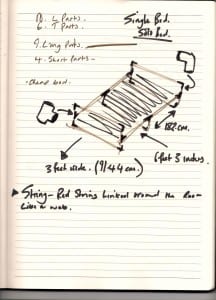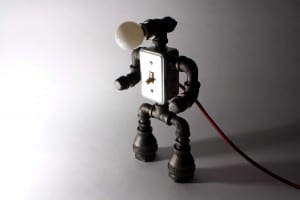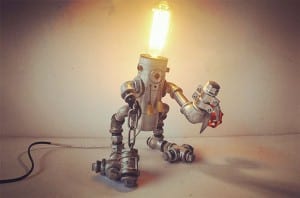
While undergoing research for my own solo performance I came across a book by accessible writer Matt Haig who has written a variety of books that deal with personal health, humor, death and the absurd. I found his writing and sense of scope and also deep humanity to be approachable and almost gentle. Granted, his topics deal with areas that are sometimes the ones we as a society tend to avoid or ignore for fear of opening the figuratively speaking ‘a deep can of worms’. A self confessed manic depressive he give a honest to life account of dealing with depression in an often upbeat and humors manner. Truth be told while reading his book as part of my creative research, I found myself openly laughing about content that I really should be more closed about, however this is where I feel the line between topic and performance truly begin and this is what I want to incorporate into my own performance.
As my own show is a “comedic exploration of procrastination and loneliness” I feel looking at sources that talk about emotion and depression are interesting and insightful as often loneliness can be a product of depression or visa-versa.
One of his chapter’s titled, Life On Earth To An Alien:
This opening deals with some of the ideas that I want to express concerning loneliness, however it has to be said there are moments in this text that could be considered a little bleak or depressing. I want to avoid this, however I do ultimately aim to educate my audience, but I do not want to preach. I want the audience to feel a small sense of fulfillment or ‘difference’ in change, in a small way of perspectives. I honestly feel his writing style, lends itself to one of a theatrical nature.
It’s hard to explain depression to people who haven’t suffered from it. It’s like explaining life on Earth to an alien. The reference points just aren’t there. You have to resort to metaphors. You are trapped in a tunnel. You are at the bottom of the ocean. You are on fire. The main thing is the intensity of it. It does not fit within the normal spectrum of emotions. When you are in it, you are really in it. You can’t step outside it without stepping outside of life, because it is life. It is your life. Every single thing you experience is filtered through it. Consequently, it magnifies everything. At its most extreme, things that an everyday normal person would hardly notice have overwhelming effects. The sun sinks behind a cloud, and you feel that slight change in weather as if a friend has died. (Haig, 2015, 25-26).
Depression Is…:
An internal war.
A black dog (thanks, Winston Churchill and Dr Johnson).
A black hole.
An invisible cooker.
A pressure cooker.
A devil inside.
A prison.
An absence.
A bell jar (‘I would be sitting under the same glass bell jar,’ wrote Plath, ‘stewing in my own sour air’).
A malicious code in the operating system of your mind. A parallel universe.
A life-long fight.
A living nightmare.
An echo chamber.
Dark and hopeless and lonely.
A collision between an ancient mind and a modern world (evolutionary psychology).
A fucking pain.
(Haig, 2015, 175-176).

The Power of Negative emotion.
This book I would claim has been both beneficial and a huge hindrance to my developing work as it has changed my own preconceptions of what ‘negative emotion’ is. Overall I assumed that escapism and mundanity were caused by those around you however this book illustrates that it is your depressing surroundings that can cause these feelings. It takes case studies and accounts of those admitting or retelling parts or processes of their lives where they have felt overwhelmed by ‘negative emotions’ and aims to dissect them into the smallest detail. It has been highly useful as a source for both humor and narrative content within my own developing scripts and work. It inspired me when creating a narrative to use some of its text in order to ground my work within a scholarly sense. In many ways it further inspired me to continue my pursuit into looking into self-help books and see the whit and cynicism within them. Some if its chapters make for an interesting albeit cynical read if you are like me, never the less I can’t deny its value within my own developing work.
CHAPTER 1. THE FALSE NOISE OF HAPPINESS
CHAPTER 2. THE RISE OF THE COMFORTABLE CLASS
CHAPTER 3. WHAT’S SO GOOD ABOUT FEELING BAD?
CHAPTER 4. HOW POSITIVE EMOTION CAN LEAD TO YOUR DOWNFALL
CHAPTER 5. BEYOND OBSESSION WITH MINDFULNESS
CHAPTER 6. THE TEDDY EFFECT
CHAPTER 7. THE WHOLE ENCHILADA
(How can I not be sarcastic about this?)
The World Beyond Your Head

This book has been an interesting read for me because If I am honest I find myself at odds with the entire thing as it yet again leans towards self help and suggests statements of ‘you are pointless unless you do something about your life’ it has however influenced how I write on the subject of both loneliness and procrastination. This book highlights on elements that in everyday life are made to influence or distract you from advertisements, technology to other mediums. I think this text is interesting as within performance we are being distracted and it is only through concentration that we are able to produce worthwhile material or highlight key issues. However vague this text may be I think I should utilize some of it overdone lessons within my solo performance, maybe use the format of multiple medias in order to convey my overall message.
Works Cited.
Haig, M. (2015) Reasons To Stay Alive. Edinburgh: Canongate.






